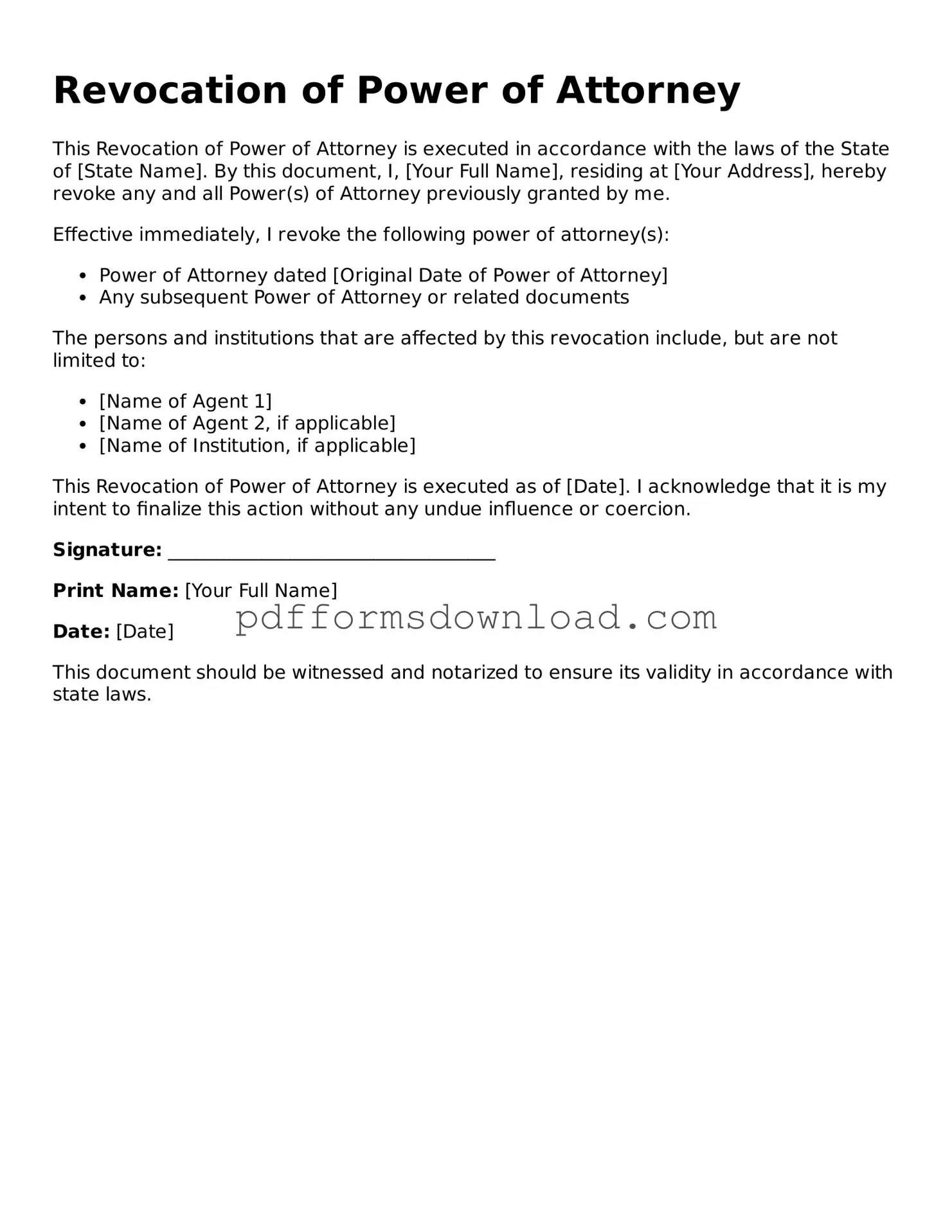What is a Revocation of Power of Attorney form?
A Revocation of Power of Attorney form is a legal document that cancels or nullifies a previously granted Power of Attorney. This form allows the principal—the person who created the Power of Attorney—to formally withdraw the authority given to the agent or attorney-in-fact. It serves as a clear indication that the agent no longer has the right to act on behalf of the principal.
When should I use a Revocation of Power of Attorney form?
You should use a Revocation of Power of Attorney form whenever you wish to terminate the authority of an agent you previously appointed. This might occur if you no longer trust the agent, if your circumstances have changed, or if you have decided to appoint a new agent. It is important to act promptly to ensure that your wishes are respected and to avoid any potential misuse of authority.
How do I complete a Revocation of Power of Attorney form?
To complete a Revocation of Power of Attorney form, you will need to provide your name, the name of the agent you are revoking, and the date the original Power of Attorney was executed. Additionally, you should sign and date the form to validate it. Depending on your state’s requirements, you may also need to have the document notarized or witnessed.
Do I need to notify the agent that I am revoking their Power of Attorney?
Yes, it is advisable to notify the agent of the revocation. While the revocation is effective upon execution of the form, informing the agent helps prevent any confusion and ensures that they do not continue to act on your behalf. Providing a copy of the Revocation of Power of Attorney form to the agent is a good practice.
What happens if I do not notify third parties about the revocation?
If you do not notify third parties, such as banks or healthcare providers, they may continue to recognize the agent's authority until they are made aware of the revocation. This could lead to unauthorized actions taken by the agent. To avoid complications, it is essential to inform relevant institutions and individuals about the revocation as soon as possible.
Can I revoke a Power of Attorney if I am incapacitated?
Generally, you cannot revoke a Power of Attorney if you are incapacitated. Revocation requires that you have the mental capacity to understand the implications of your actions. However, if you regain capacity, you can then execute a Revocation of Power of Attorney form. In cases of incapacity, legal alternatives, such as guardianship, may need to be considered.
Is a Revocation of Power of Attorney form permanent?
Yes, a Revocation of Power of Attorney form is permanent until you decide to create a new Power of Attorney or revoke it again. Once the revocation is executed, the previous agent no longer has any authority to act on your behalf. Always keep a copy of the revocation for your records, and consider informing any relevant parties to ensure clarity.
